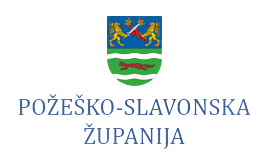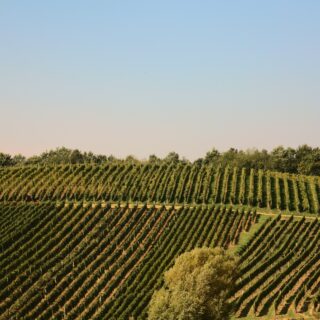
Wine and Wine regions
Since ancient times, here we pour wines
The World of Graševina comprises the wine regions Kutjevo, Požega – Pleternica and Pakrac in the Požega-Slavonia County. In each of them golden grapes of wine culture and tradition are waiting for you, that you must taste.
The wine heritage here goes back into ancient history, from Antiquity over the turbulent medieval period until the present moment, when this region is rediscovered as an important part of European wine history.
Our precious and unique wine
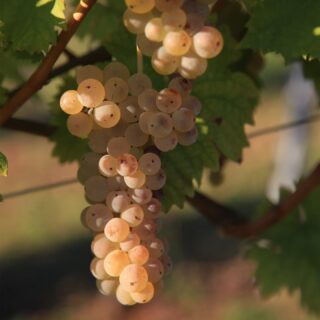
Graševina
Graševina is a variety of white grapes which the wine of the same name is made from. Unfortunately, Graševina does not have the official status of an autochthonous variety, but it has something much more important – the unquestionable quality of wines it produces.
In 2012, the world’s most famous wine promoter, Jancis Robinson, adopted the original Croatian name Graševina in the book Wine Grapes, a guide to 1368 wines. British wine author Oz Clarke, a wine expert and journalist who was also a world champion in wine tasting and an excellent connoisseur of Croatian wines, also has only words of praise for Graševina. One of the leading Croatian wine connoisseurs, Prof. Dr.Sc. Edi Maletić concludes that the quality of wine produced from this variety is more important than its autochthonousness. And in this regard, Graševina is at the very top of Croatian wines.
Graševina is the most represented Croatian variety for the production of predicatewines. These wines with special characteristics obtained by delayed harvesting periods are the pinnacle of winemaking. Due to their exclusivity and fantastic quality, predicate wines become more and more interesting to both producers and wine connoisseurs who search in wine for something more than just the usual. Ice wine is perhaps the most popular type of predicate wine, and it is produced in years when the temperature is below -7° C for several days in a row. Once more, Graševina is undefeatable as it best endures delayed harvest periods.
Graševina is an excellent base for the production of sparkling wines. Graševina sparkling wines represent a great potential for the production of unique wines that will not stick to existing stereotypes of sparkling wines and champagnes, but offer consumers something new and original. Recently, the production of natural sparkling wine using the charmatmethod, which conducts fermentation in double-walled metal vessels instead of bottles, has become increasingly popular. This method of production suits Graševina because it can be used to produce intense sparkling wines with lots of fruity aromas that go very well with all kinds of celebrations and parties, especially in the craziest part of the year.
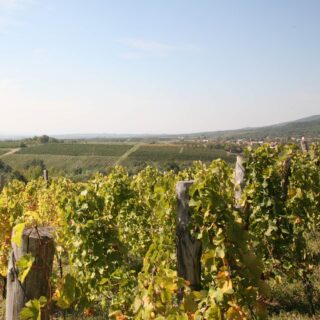
The main characteristics of Graševina
Graševina is a very adaptable variety and thrives on most soils, especially continental ones. The bunches of grapes and berries are small, so even its name comes from the fact that it looks like a pea. It is a high-yielding variety and always achieves the same quality. It keeps the highest quality level on the southern and southwestern slopes of the Slavonian vineyards at an altitude of 200 to 300 meters.
The wine is of golden-yellow colour, highly perfumed, dry, with medium alcohol content and sweet bitterness. Already as a young wine, it develops recognizable varietal scent and a pleasant aroma of special freshness. It abounds in fruity aromas of apple and pear, but also some floral ones like violet, jasmine, and linden.
The fact that wines of this variety from all areas of Croatia have won over 350 gold medals at the Decanter World Wine Awards says a lot about the quality of Graševina. The Decanter Award is considered the most prestigious award for wines. Wines from all over the world are scored at these wine evaluations. Achieving such good results means that Graševina has a very signficant place on the world’s wine map.
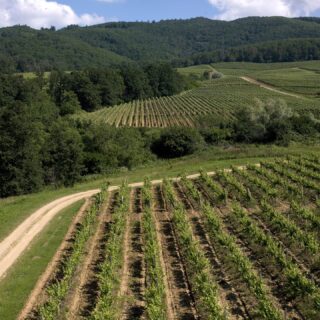
Queen of Vineyards
Everything mentioned before makes us understand why Graševina means to this region so much more than just a variety of wine. It is the reflection of life continuity over generations, common memories, the power of culture and tradition, the beauty and generosity of nature, the skills of winegrowers and winemakers and their love for their homeland. Its presence is so precious that it does not astonish to hear its so often used nickname „queen of vineyards“.
The story of Graševina is a story you should experience with all your senses. Come and visit the World of Graševina, taste this wine in its natural environment and let it unveil to you its true identity.
Cheers!

Wine regions
The sea retreated, the mountains remained
The area of the World of Graševina and its surroundings were part of the Pannonian Sea a long time ago. As the sea level decreased, a fertile soil remained on the highlands after the sea receded. Because of its mineral components, this soil is an ideal location for growing grape varieties which you can taste with every glass of wine from this region.
One should also mention that other numerous grape varieties are cultivated in these vineyards, besides Graševina as the most significant one. These are čačurica, cadarca, lipolist, burgundy, jackdaw, black dogwood, modrina, sladina, slivoš, smederevka, Italian, velezrn, black crow…
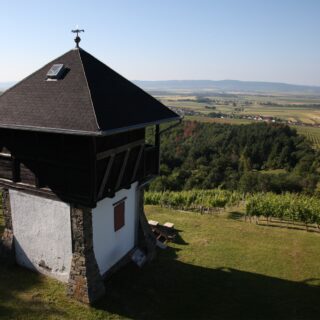
Kutjevo Wine Region
Kutjevo Wine Region is particularly suitable for wine production as it is located on the 45th parallel which is home to many famous world winegrowing regions such as Istria, Piedmont, Bordeaux, Val de Rhône and Oregon.
The favourable geographical position and mineral components of the soil, lots of sunshine, the inclination of the terrain and its altitude, as well as other preconditions, are just perfect for a winegrowing culture and resulted in more then 400 producers of grapes and wines in this area.
This wine region comprises for areas – Kutjevo, Čaglin, Kaptol and Velika.
Most of the vineyards are located around Kutjevo town. So it is not surprising that you can find the most excellent wine locations here. Bektež, Vinkomir, Rosenberg, Mačevo brdo, Mitrovac, Venje, Hrnjevac, Lukač and Vetovo are the locations where Graševina dominates, but where excellent Pinot Noir and Grigio, Cabernet, Traminac, Frankovka, Zweigelt, Chardonnay, Merlot are also cultivated.
The wines of Kaptol area are also high-yielding and guarantee top quality, on locations such as Kaptol and Podgorje. Besides Graševina, you can find here Chardonnay and Pinot Noir as well as some Cabernet and Sauvignon wines.
Above Velika town, the vineyards are surrounded by forests and the soil is particularly suitable for many black wine varieties and Graševina. The Radovanci location is special for its dessert wines and predicate wines. Next to it, there is also the Šage location with vineyards turned to the south, which is an excellent position for any vineyard.
The best proof for the quality of wines of this region are the awards they win. The first Decanter World Wine Award, an Oscar among wine awards, was won for Croatia by Ivan Enjingi for his wine Venje from the distant year of 1998. It was the beginning of a successful story about Croatian white wines that still persists today.
The long tradition of winemaking in this region is best evidenced by the Cistercianwine cellar from 1232, located in the centre of Kutjevo. It is also the oldest facility of its kind in Croatia and this part of Europe.
An absolute must see is the Villa Vinkomir located on the Vinkomir hill near Kutjevo where you will enjoy the most beautiful viewpoint of this part of Slavonia.
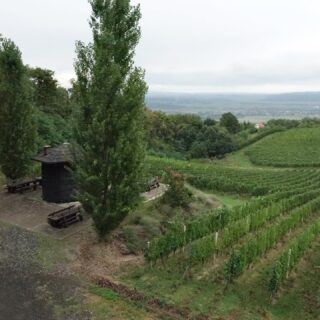
Požega – Pleternica Wine Region
This wine region comprises Požega, Pleternica, Brestovac and Jakšić.
The vineyards are located at an altitude of 400m, most of them on the slopes of Požega mountain. They are densely planted and with their most widespread variety Guyot, they give the best yield.
The hills of Klikun and Starac above Pleternica town represent the most treasured locations. They are claimed to have the best position for growing grapes in continental Croatia.
A legend says that the toponym Klikun originates from the surname of the widow Cliquot, whose champagnes conquered the world. On her journeys, the widow also visited Pleternica and she was so delighted with this wine-growing region that she ordered barrels from this region for her cellars. To say thanks, she sent grape vines from the Champagne county to the people of Pleternica.
Besides excellent Graševina, winegrowers also cultivate here the Chardonnay, Cabernet Sauvignon, Rhine Rizling, Ottonel Muskat, Pinot Noir, Merlot and Cabernet Franc.
Perhaps the most beautiful scenes related to vineyards in this area can be experienced on the Rose and Wine Route at the end of May and the beginning of June when these two plants are in bloom. Roses are planted here alongside vines as a symbol of coexistence with nature and friendship, but they also have a practical role. Roses are an indicator of powdery mildew and thus can help winegrowers protect their crops in time. One enjoys the breathtaking scenery as soon as the queen of the vineyard and the queen of flowers put on their most beautiful appearance. That’s why you should definitely come in late spring and see with your own eyes the harmony and synergy of nature, refined by human effort.
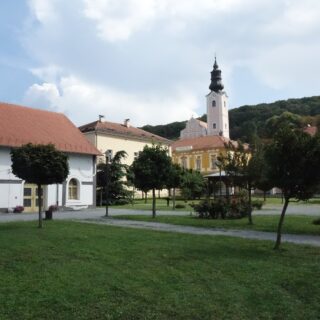
Pakrac Wine Region
Pakrac and Lipik are the most important towns of this wine region which cannot praise itself for large quantities of wine produced, but it has something equally important – an ecological approach to wine production.
Nowadays when we understand that human health and the preservation of nature are inextricably linked one with another, the wine production in accordance with ecological principles does make sense for sure. Young winemaker Saša Ćasić from the Donja Obrijež village near Pakrac practices viticulture led exclusively by ecological principles of grapevine growing and wine production. This means as little use of chemical agents as possible, fertilization with manure and wine protection by means of special bacteria. Such an approach to wine production should be encouraged as much as possible as it can certainly produce not only good quality of wine but also have positive effects on the relationship between man and his environment.
Its natural beauty, colourful villages, hardworking people, the culture of wine production and, above all, the widely known Slavonian hospitality which links the past and the present, were first described by Piller’s and Mitterpach’s travelogue “Traveling around Slavonia in 1782”. Their contact with Slavonia and all the aspects it represents happened exactly in the Pakrac region. The descriptions of the largegranary, the Spahija cellar and the slopes covered with golden grapevines largely served as an inspiration for launching the World of Graševina project.



